4 winning steps to being a professional teacher
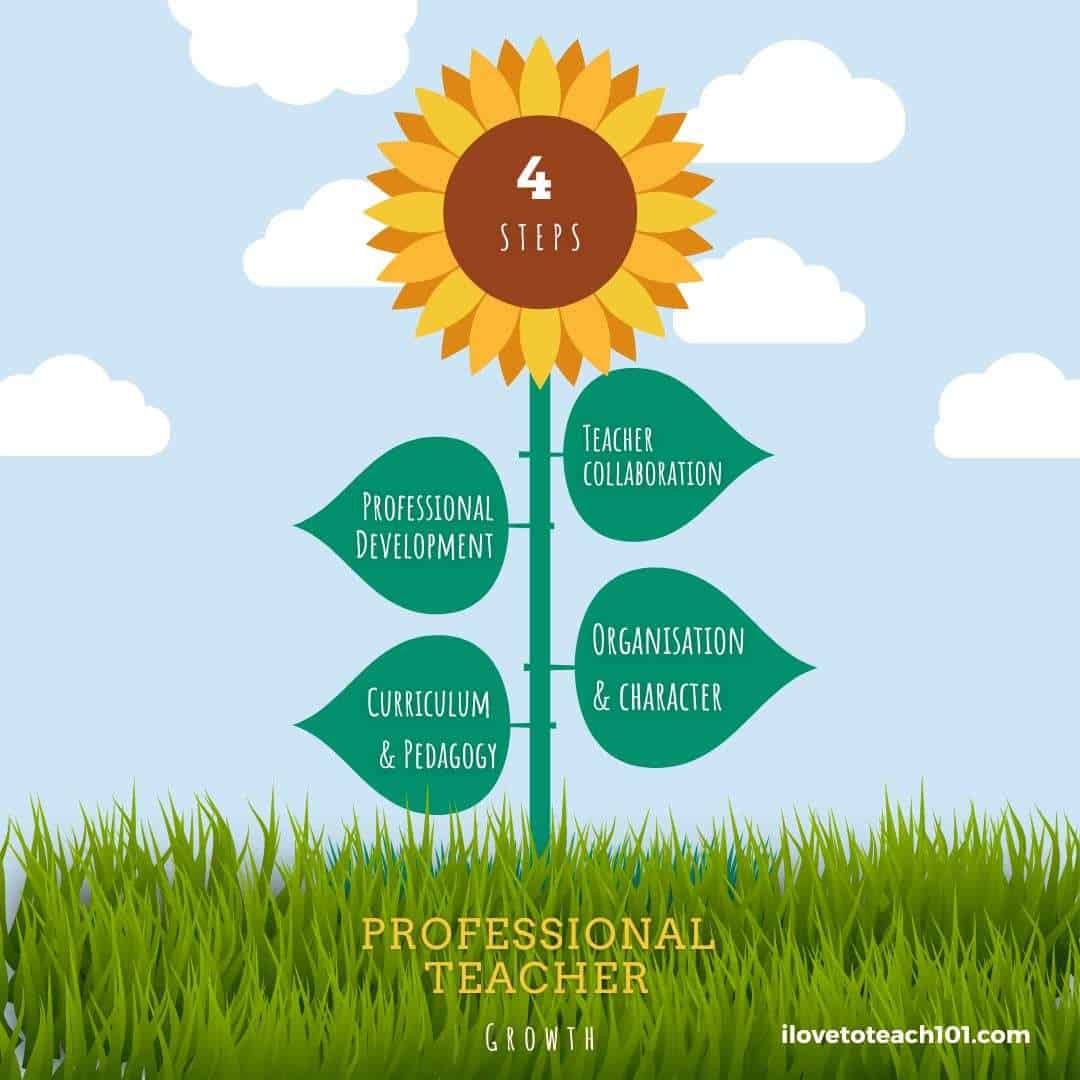
Are you basking in the joy of teaching, but secretly yearning to take your game to the next level and become a professional teacher?
I’ve got some winning steps that will catapult you into the realm of educational greatness. Buckle up and let’s embark on this transformative journey together.
Now, I know what you might be thinking. “Am I really cut out to be a professional teacher? Can I truly make a difference in the lives of my students?” Trust me, I get it. Doubts can creep in, and it’s perfectly normal to question yourself. But let me tell you something – those thoughts are just like unruly students clamoring for attention. We’re here to tame those doubts and transform them into unshakeable confidence.
Being a professional teacher isn’t just about the qualifications or the number of years under your belt. It’s a mindset, a commitment to continuous growth and improvement. It’s about creating an impact that lasts far beyond the classroom walls. And guess what? You’ve already taken the first step by acknowledging your desire to level up. Kudos to you!
So, here’s the deal. By following these four winning steps, you’ll unlock a whole new world of teaching prowess. We’ll delve into the art of effective communication, harnessing the power of technology, nurturing a growth mindset, and mastering the art of reflection. Trust me, it’s going to be a game-changer.
Ready to ignite your teaching career and embark on the path to becoming a professional teacher?
This helpful information guide on being a professional teacher is divided into four sections
Hugh Socket (1993) identified five major aspects of teacher professionalism but I have chosen to combine curriculum and pedagogy in my four part guide on being a professional teacher.
- Continue teacher professional development
- Classroom management, character and dress code
- Know the curriculum and pedagogy
- Collaborate with teachers, parents and the community
1 – Continue teacher professional development
When it comes to being a professional teacher, we’ve got to embrace change and keep that learning fire burning. You know what I mean? We’ve all seen it – a student hitting a roadblock and losing that spark. Well, guess what? We’ve got to make sure we don’t fall into the same trap.
Now, these Teaching Standards might sound intimidating, but let me tell you, they’re not here to rain on our parade. Oh no, they’re actually our comrades, our buddies in the quest for professional growth. They give us a common language, a framework to measure our awesomeness as teachers. So, let’s welcome them with open arms and use them as a tool for some serious self-assessment.
Back in my early days as a fresh-faced teacher, the West Australian Ed Department threw us newbies a bone and organised a Professional Teacher Development Conference. And let me tell you, it was a real game-changer. We had a number of exceptional speakers, but there was one who stood head and shoulders above the rest. He knew how to captivate an audience, and he had some seriously practical ideas that worked like a charm in the classroom.
But you know what really stuck with me? His final piece of advice. He dropped this bombshell on us: “Make it a point to read at least ONE education book every year during those glorious school holidays. Get your hands on fresh ideas, my friends. Keep that learning train chugging along!”
So, let’s take that advice to heart, embrace those Teaching Standards, soak up new knowledge, and never stop learning. Our students deserve nothing less.
Read at least 1 education book per year during the long school holiday, that has new ideas.
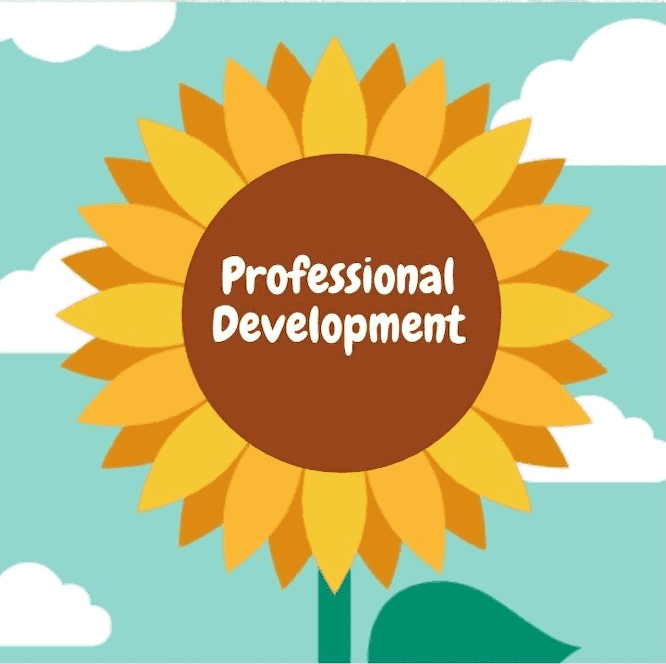
I know sitting through professional development (PD) sessions can sometimes feel like a drag. I mean, who wants to be forced into team-building activities when we’ve got a gazillion other things to tackle, like planning and grading? And let’s not even get started on those trendy educational fads they love to throw at us.
But here’s the deal, my friends. PD days can actually be beneficial if we don’t just stop there. Being a professional teacher means taking the reins and being proactive in our own development. So, let’s not sit there and grumble like a bunch of naysayers. Let’s step up and take charge.
Now, I don’t know about you, but I’m a firm believer in teachers owning their own PD. When we take responsibility for our own growth, it’s like a magical transformation happens. It’s not just our teaching practice that gets a boost, but other aspects of our lives as well.
You see, when a professional teacher is in the house, everyone can breathe a sigh of relief. Why? Because they know that the job will be done right. That’s the level we all strive for in this noble profession. We want to reach that pinnacle, that point where our dedication and expertise shine through.
2 – Professional teacher dress code, character, classroom management and organisation.
One of the secrets to being a professional teacher is classroom organisation. Now, listen up, because this is where the magic happens. We’ve got to ditch the dull and boring vibes and create an environment that’s as engaging as a West End show or the No.1 Movie Hit. Trust me, no one wants to spend the whole year stuck in a sleepy boring classroom.
Hey, if we teachers wouldn’t last more than a day in a mind-numbing PD session, why make our students go through the same deary misery all year long?
It’s time to transform that classroom from drab to fab!
First things first, let’s be intentional about how we set up our teacher desk and those student desks. We want to create a space that’s not just functional, but also safe and welcoming. We’re talking about an atmosphere that screams, “Hey, I’m here for you, let’s dive into this learning adventure together!”
Now, here’s a little tip for you – Pinterest is your best friend when it comes to finding inspiration. Get ready to dive into a world of creative ideas that will make your classroom shine brighter than a crown jewel. Trust me, there’s no shortage of inspiration waiting for you on that virtual wonderland.
So, let’s shake things up, banish the boring, and create a classroom that’s bursting with energy and excitement. When we do, the magic happens, and our students will thrive in an environment that sparks their curiosity and ignites their passion for learning.
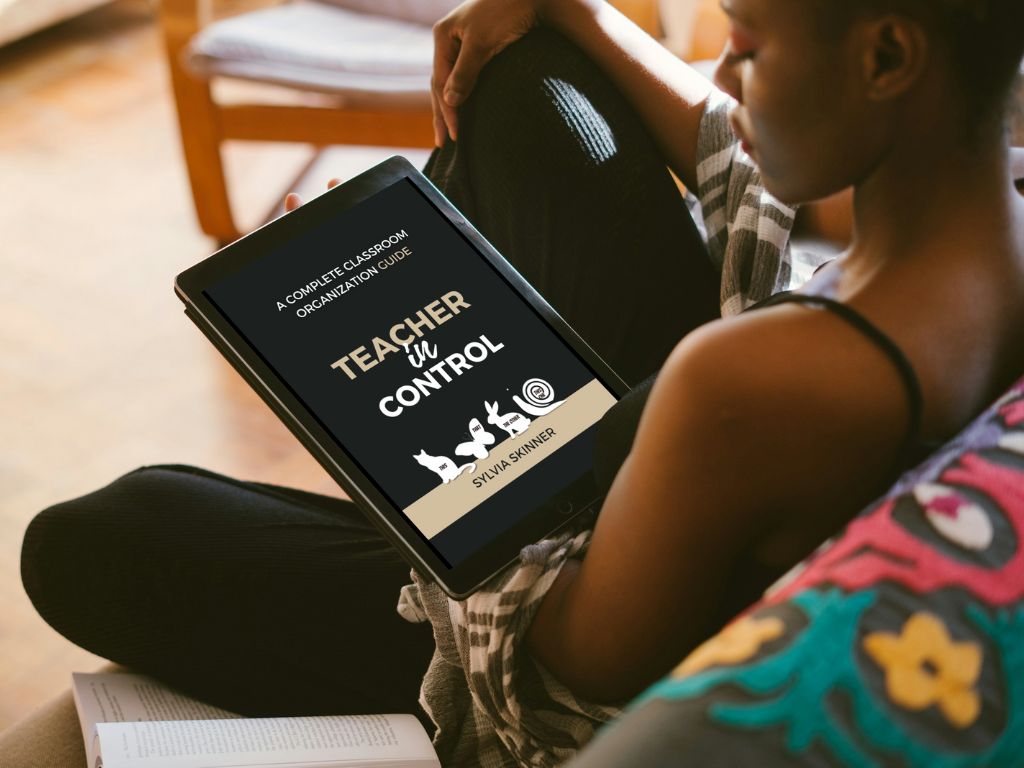
Teacher in Control: is a complete classroom organisation guide and costs less than a dollar.
If you’ve got a chaotic classroom, it’s like putting a lid on your students’ potential. We need to get our act together and prioritise the physical organisation of our learning space, along with setting clear rules and procedures. Trust me, it’s the key to unlocking student success in a jiffy!
Look, you can’t just spruce up a classroom and think that’s it. You’ve got to teach your students how to navigate it, right? So, demo the perfect student behaviour with role plays for the little ones and engaging conversations for the older ones.
Over time, I’ve come up with a points system for the classroom economy that encourages students to participate, support one another, and get excited about learning.
Here’s a tip about awarding points, go big or go home. Give a student 1 point, and it’s just sad. But tell them they’ve earned 10, 50 or even 100 points, and they’ll be over the moon.
You’ve got your lesson plans sorted, your classroom ready, and your paperwork all squared away. There’s never a moment when you need to stop and regroup in the middle of teaching.
Getting to this level of organisation might take a bit, but trust me, it’s worth it. A digital planner can help you speed up the process, so you’ve got everything filed, sorted, and right at your fingertips. Not only does this keep you on the ball, it makes you a better teacher and gives your students confidence.
You’re on top of not just your own schedule, but your students’ too. You know what’s happening every minute of the day. Now, that’s professionalism, and it makes a huge difference to your teaching.
But being a professional teacher is not just about being organised and a good teacher, it’s also about listening and caring for our students. Work on developing good character and be the teacher kids want to learn from.
Students, can tell the difference between a teacher who’s got it together and one who’s flapping about. As they say, they can sniff out fear. It gives them confidence and security to know that you’re sorted, caring, reliable, and, most importantly, that you truly care for them
Leave the skin tight attire for the night club or not at all.
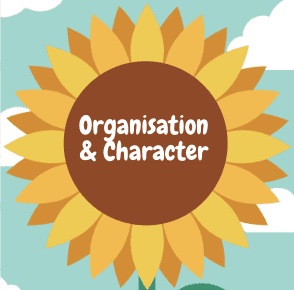
Being a professional teacher also means looking the part. Our students and their parents expect it, and it’s just the right thing to do.
Get to know your school’s dress code for teachers and stick to it. Don’t worry about other teachers who might not necessarily follow it – being a professional teacher means having the courage to do what’s right. If it’s hugging you a bit too tight, leave it in the wardrobe.
Keep the skin-tight numbers for the night club, or better yet, not at all. Think about it, if the Queen came to pay a visit, what would you put on? Don’t our students and colleagues deserve a bit of respect too?
For inspiration, head over to Pinterest. Search for teacher fashion elementary work, and if you’re more on the curvy side like yours truly, look up teacher fashion plus size work outfits. And for the gents out there, male teacher fashion, is a fantastic Pinterest link to check out.
The focus should always be on keeping a professional appearance. Take pride in your clothes and present yourself to your class each day in an outfit that says, ‘I showed up ready to teach, so you better be ready to learn.’
That’s the magic that happens when a professional teacher is in action. Everyone wants to get on board with the programme.
3 – Know the curriculum and pedagogy
Now, while the curriculum is the content that education department mandates we’ve got to teach, it’s up to us, the teachers, to decide how we’re going to deliver it. A professional teacher can take the most tedious content and breathe life into it, linking it to the real world. But let me tell you, an uninspired teacher can take the most innovative curriculum and turn it into a snoozefest with poor delivery.
Nobody loves a never-ending lecture, right? So, as a professional teacher, you’ve got to find unique ways to get your students involved. Picture your classroom as a restaurant, where you are the Master chef dishing up tantalising starters to whet your students’ appetites. In the classroom, these starters are anticipatory sets or hooks. Get them moving around, take some lessons outside, and bring in some tech tools when it fits.
Particularly for primary teachers, it’s crucial to have a strong understanding of how to deliver phonics using a top-notch, evidence-backed structured phonics programme. If you lay down the right practices early on, those literacy skills will flourish.
Now, during the fifteen years I taught abroad, where English was like the fourth language, I used the Letterland stories phonics system. All my students were able to read, write, and speak in English, which led to a rather long list of families wanting to get their kiddos into our school.
I’ve even used the Letterland stories phonics system back here in Australia with Aussie kids, and it works like a charm every time. The Letterland phonic stories get students reading in no time.
But let me tell you, any phonics programme can do the job. It really all comes down to the teacher and how you put it into practice.
The Letterland ‘Sh’ phonic story is one of my favourites.
Now, being a professional teacher also means handling interruptions and disturbances with a cool head. You’ve seen it all before, and you know the drill. Now, getting to the point where you really know how to react in every situation, thanks to your understanding of the curriculum and teaching methods, well, that takes a bit of time. But if you’re prepared in all other aspects, these disruptions won’t knock you off balance.
Believe it or not, disruptions can sometimes present an unexpected lesson opportunity, rather than being just a nuisance. Address them, and then smoothly and calmly get back to your lesson. If you can weave the interruption into your lesson or spin it into a new lesson, it shakes things up a bit, which can be a breath of fresh air for your students, without straying from the curriculum.
Being a professional teacher means knowing what to do both long range and right now.
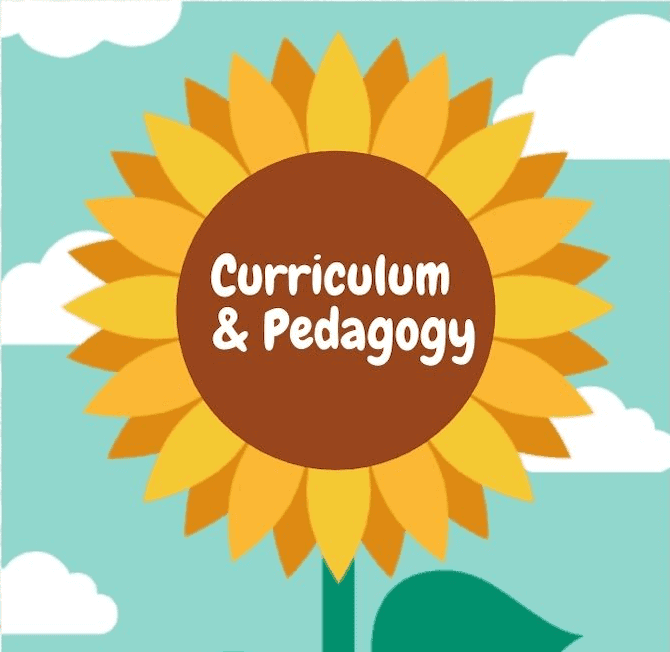
This means, you show up prepared. Being so thoroughly prepared and knowing that curriculum inside and out lets you be flexible. It bestows upon you a serene confidence that allows you to loosen up, even crack a joke or two with your students.
When your students see that smile of yours, because everything’s sailing just as smoothly as you planned (and keep that grin even if it isn’t), they’ll react and warm up to you. Trust me, students can pick up on your confidence, and they’re eager to see where this journey with you leads.
I’d suggest giving this video by Azul Terronez a watch for some extra insights on ‘What makes a good teacher great?’ – I’m particularly fond of the student quote ‘Good Teachers Sing . . . . ‘
4 – A professional teacher collaborates with colleagues, parents and the community
A great way to create positive relationships with your student’s parents from the get-go, is my FREE ‘Meet the Teacher’ template. Just edit it and add it to your teacher’s website or Class Dojo or Google Classroom and get it to your students’ parents’ eyes at the start of the new school year.
Now, a professional teacher knows how to keep the lines of communication open with parents. It’s not just about laying down the law or telling them what Johnny’s been up to, it’s about building positive relationships. Seek out the good in every student. Find ways to engage with the broader community – get involved in local carnivals, fetes, competitions where your class can participate, or even some community service.
I remember one year, my Year 5s spent some time sprucing up the gardens for some of our elderly community members. What a fantastic way for students to learn about caring for others, not just themselves.
Now, I don’t know about you, but I get a little twitchy when I’m being watched while teaching. However, if you want to know what being a professional teacher looks like, the best way is to watch other teachers in action. When I started a primary school overseas, a young school leaver was adamant about observing my teaching. After she pleaded with me five times, I relented. After several months of watching me, she decided to become my first student teacher. Now, she’s a hot commodity in the teaching world, with other student teachers lining up to observe her.
One effective way to observe is to use a bit of your non-contact time to sit quietly in the back of someone else’s classroom, grading your papers as you watch. You’ll pick up a wealth of teaching techniques and classroom management strategies. Just make sure to ask first. What I absolutely adore is seeing the inventive ways other teachers organise their materials or how they establish good procedures. You might not do it exactly the same way, but it can definitely spark a lightbulb moment for you.
Very few teachers will ever ask openly for help. That cries, I don’t know what I’m doing!

Being a professional teacher means you’ve learnt over time how to handle the stresses and responsibilities that come with the job. New teachers, can often feel completely overwhelmed and unsure about what to do. Sadly, new teachers and even some seasoned ones want to appear prepared and in control.
Not many teachers will openly ask for help. It’s like shouting, “I don’t know what I’m doing!” That’s why teacher collaboration is the best thing we can do for each other.
Unless you’re a social butterfly, you might hesitate to ask questions. If you’re anything like me, you don’t want to bother anyone, or you don’t want to look foolish. But you’ve got to push past those thoughts and just ask. Collaboration helps you learn how other teachers tackle tricky situations or grade assignments. We encourage our students to ask questions, so why shouldn’t we teachers do the same?
If you’re worried about being a nuisance, why not jot down a list of questions in Google Keep? Then, when the chance arises, just pop a few questions. Sharing expertise is part of being a professional teacher, so you’re not bothering anyone.
So go ahead, offer up some of your top teaching tools and tips – even if nobody asked. If face-to-face collaboration isn’t an option, join a teachers’ forum or Facebook group and collaborate online. Part of being a professional teacher is lending a helping hand to others.
The final flourish to your journey of being a professional teacher
Hey there, I see you, standing on the precipice of greatness, thinking, “Can I really be that professional teacher? Can I really make a difference?”
Well, let me tell you, not only can you, but you are already on your way. I get it, it can feel like a tall order, a mountain to climb, but remember, every mountain is climbed one step at a time.
You’ve made it through this article, which shows your dedication to self-improvement and the passion to be the best educator you can be. You’re not just any teacher, you’re on the path to being a professional teacher. Remember those four winning steps we talked about? They’re not just words on a screen, they’re your recipe for success.
Now, I want you to imagine yourself in that classroom, exuding confidence, handling that curriculum like a pro, engaging your students with every word you speak. Can you feel it? That’s the power you hold. That’s the influence you have.
Let your passion for teaching shine through every lesson, every interaction, every day. That’s how you’ll make a difference, that’s how you’ll inspire.
So, take a deep breath, square those shoulders, and step into that classroom with your head held high. You’re not just a teacher, you’re a professional teacher. And let me tell you, the world needs more of you. So go on, show them what you’re made of!
Remember, being a professional teacher isn’t just about being good, it’s about being great, and great is what you are. Keep pushing, keep striving, and keep being amazing.
Reference
M. S. & J. M. Tichenor (2005) Understanding Teachers’ Perspectives on Professionalism Stetson University


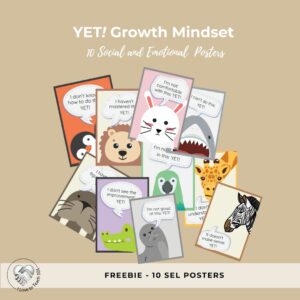




I have always believed being well-dressed and looking professional not only helps you become better respected but you just feel more confident about yourself and your abilities. Always try to look your best no matter what!
Yes, yes, yes! The students take better care of themselves too when they see their teacher does. We lead by example.